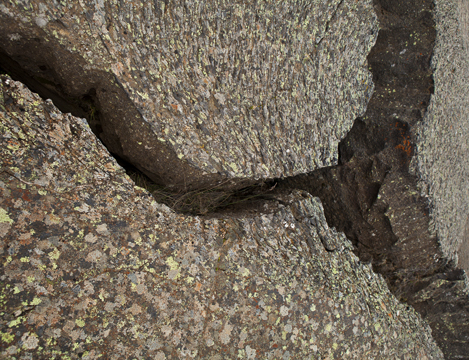By William K. Hayes
Contributed
Each spring, rattlesnakes in the San Jacinto Mountains emerge from their winter slumber and engage in a new season of pursuing food, making babies and avoiding predators and other risks. Unfortunately, many meet their demise when they encounter humans.
So how dangerous are these snakes? What should we do when we encounter them? And what should we do if we or our pet is bitten?
Fortunately, none of these snakes are out to get us. They’re as frightened of us as we are of them. They serve important components of the ecosystems they live in, keeping prey populations in check (rodents, especially, and the ticks that dwell on them) and becoming food for larger predators (like birds of prey, coyotes, and bobcats). There’s no need to kill them. If we leave them alone, they will eventually slither away.
When confronted, the snakes signal their capacity to defend themselves by rattling from a head-elevated coil and issuing slow, up-and-down tongue-flicks. Of course, they will strike if provoked, delivering a rapid bite and injecting venom through a pair of hollow fangs. In our region, the snakes rarely exceed 5 feet, and can strike perhaps half that distance, so taking two steps back should put you out of harm’s way.
If bitten and envenomated, the victim must be transported to a hospital as quickly as feasible. Helicopter transport may be necessary from a remote area if symptoms are alarming. Try to stay calm, but forget about any kind of first aid treatment, as none are effective. Once at the hospital — any of which should have antivenom in stock — you will be given an amazing treatment for the venom: it’s called antivenom. The sooner you get the antivenom, the better. Time is tissue. The venom will cause a lot of pain and suffering as it damages your tissues. It could cause scarring, permanent stiffness or amputation of a digit or limb. It could seriously injure your kidneys. You could die.
The good news is that you are highly likely to live — though you might wish you were dead. Of the 5,000 to 8,000 venomous snakebites in the U.S. each year, only about five to eight victims will die, so your odds of survival are about 999 out of 1000. Children and the elderly are at greater risk of permanent injury, which, though uncommon, can happen.
So who is most likely to suffer a bite? At the Loma Linda University Medical Center, 80% of all bites are to males; 45% result from interacting with the snake; and 20% result after recent alcohol or drug consumption. If you want to avoid a nightmarish experience and a massive hospital bill (up to half-a-million dollars or more), be smart and leave the snake alone!
Many believe that the baby snakes are more dangerous because they supposedly can’t control their venom and therefore inject all of it. That’s a widespread myth. The science is very clear: baby and adult rattlesnakes alike appear capable of controlling venom release; the adults possess substantially more venom and use it when biting; and the adults cause measurably more severe envenomations in humans.
Our pets are also vulnerable to rattlesnakes. If bitten, they will likely need antivenom as well, so they need to be transported as quickly as feasible to a veterinarian. If you’ve been told that Benadryl is all your pet needs, you’ve been sadly misinformed. One approach to protect your pet is to get it trained at least once in a rattlesnake-avoidance course, which is arranged by several organizations in the Idyllwild-Mountain Center area. Although a commercial rattlesnake vaccine is available from a veterinarian office, it will provide little if any protection against the venom of Southern Pacific Rattlesnakes, which predominate in the San Jacinto Mountains.
So what should you do when you encounter a rattlesnake? The best thing, clearly, would be to leave it alone. Admire it, take a picture, and share with others the juicy details about the experience! However, if it’s on your property, and you feel compelled to remove it to protect your family and/or pets, consider calling someone who can safely remove the nuisance animal and release it in suitable habitat a safe distance (1-2 miles) away.
Think “live and let live.” And stay safe out there.
William K. Hayes, Ph.D., is a professor of biology at Loma Linda University. He and his students study a wide range of animals but focus especially on venomous animals and their venoms.








